Decorating with plants | How to create a green design furniture
Decorating with plants. The benefits
For some time now, the trend of introducing numerous species of plants and flowers into the domestic space has been increasingly gaining ground. There are many variants available, yet each one represents an extremely characterizing element as well as a natural filler.
The reasons that lead to seeking this type of green furniture can be various and sometimes mainly decorative, but it is proven that plants have some relaxing effect on us, helping us reduce stress and improve concentration throughout the day. Not only that: some plants help purify the air and maintain a certain degree of freshness in the environment by filtering the sun’s rays and reducing the glare of light on hard surfaces.
Finally, it is worth remembering that plants are alive, a characteristic that is increasingly important to rediscover in our urbanized cities so as not to surround ourselves only with sterile elements.
The layout | How to create beautiful and functional environments
Anyone who decides to furnish their home with plants and flowers must keep in mind some fundamental rules that internalize the basic principles of design and spatial functionality.
First of all, it is good to choose the impact that the greenery will have on the environment, whether you want to create a jungle effect or you prefer to fill only a few corners with small ornamental spots. Equally important is to understand the square footage available, since each plant will need its own space for its growth and development.
It will also be necessary to identify the brightness of the rooms and whether or not there is direct sunlight. Based on these two characteristics, we will have different species of plants available that require more or less sunny environments. Furthermore, we will have to establish the level of humidity and the presence or absence of radiators from which the plants must necessarily be kept away.
Once this is done, we can finally formulate a green furnishing project taking into account the different characteristics and some basic rules.
Typically, the most successful green compositions follow the principle of three levels or layers: starting from the tallest species at the back, you then move downwards, playing on the heights and foliage, creating contrasts but above all a dense patch of greens of different shades. In this case, the most suitable species are Strelitzia, Kenzia, Ficus lyrata, Ficus elastica, Ficus Alii in the background, next to Monstera, Spathiphyllum, Chamaedora elegans, Aspidistria, Alocasia, Anthurium, the latter ideal for completing a second level. Finally, Pothos, Agapanthus and Liriope in large containers to give the whole a ‘lawn’ effect.
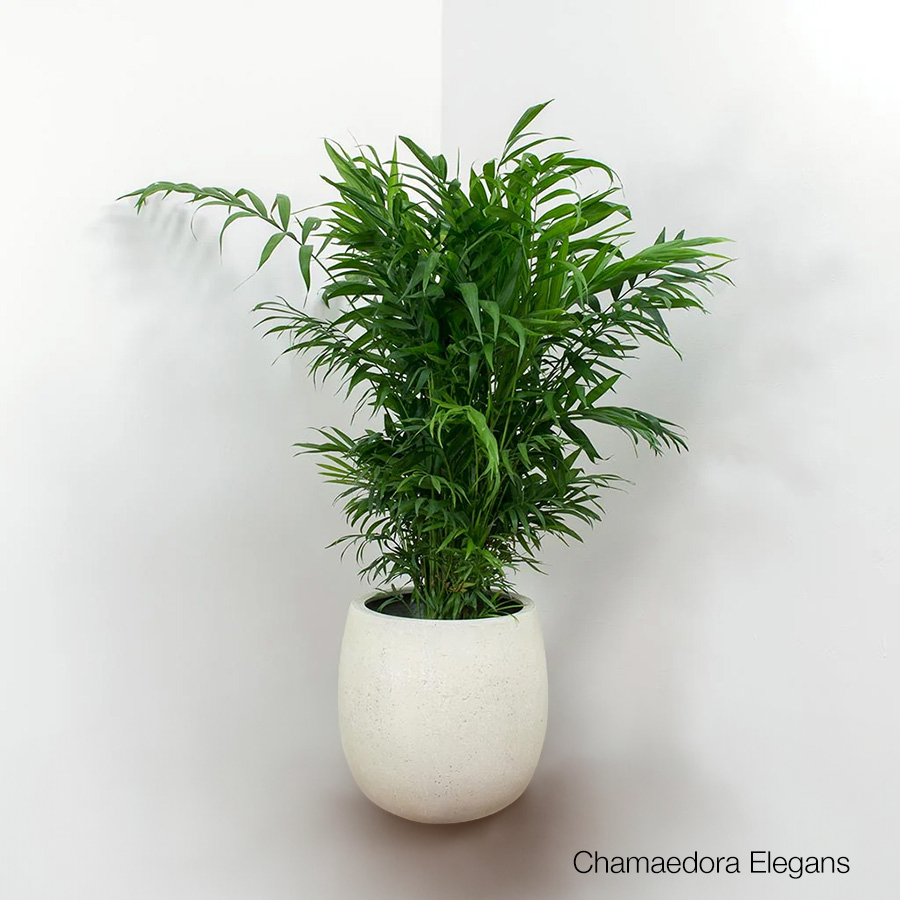
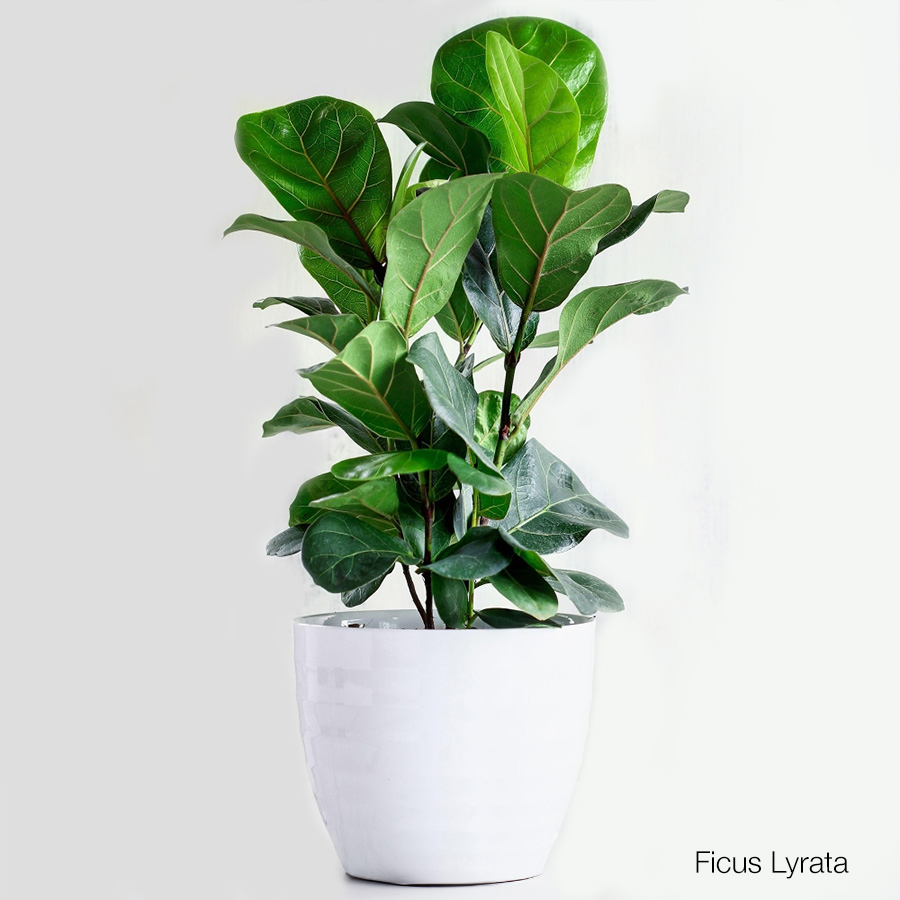
Green design | Some mistakes to avoid
Keep plants away from heat sources such as fireplaces and radiators.
Plants of many different species grouped together in a single spot can produce a disharmonious effect; on the other hand, a group of plants of the same species or variety can have a notable decorative effect.
Once purchased, keep in mind the characteristics of each species, especially the amount of water desired and the temperatures necessary for survival. Just considering these two factors could avoid unpleasant surprises.
Dogs and cats can be the best friends or the worst nightmares for our plants. Pay attention to the behavior of your pets and intervene immediately if you notice signs of intolerance or relentlessness towards your green oases.
Reflect on your habits and the lifestyle you lead. Based on how much you are present or not at home, the hours you spend there and your passion for greenery, you will be able to better select the most suitable species. For example, plants that need to be watered more often are not suitable for those who travel a lot, unless an automatic irrigation system is installed.
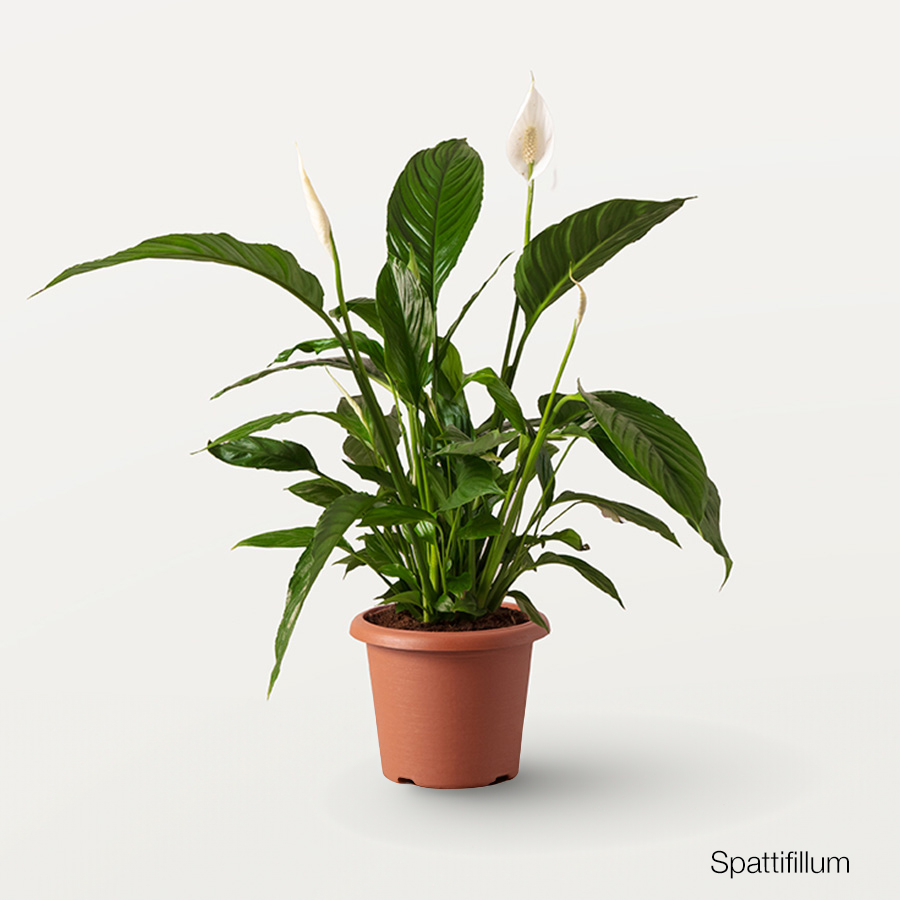
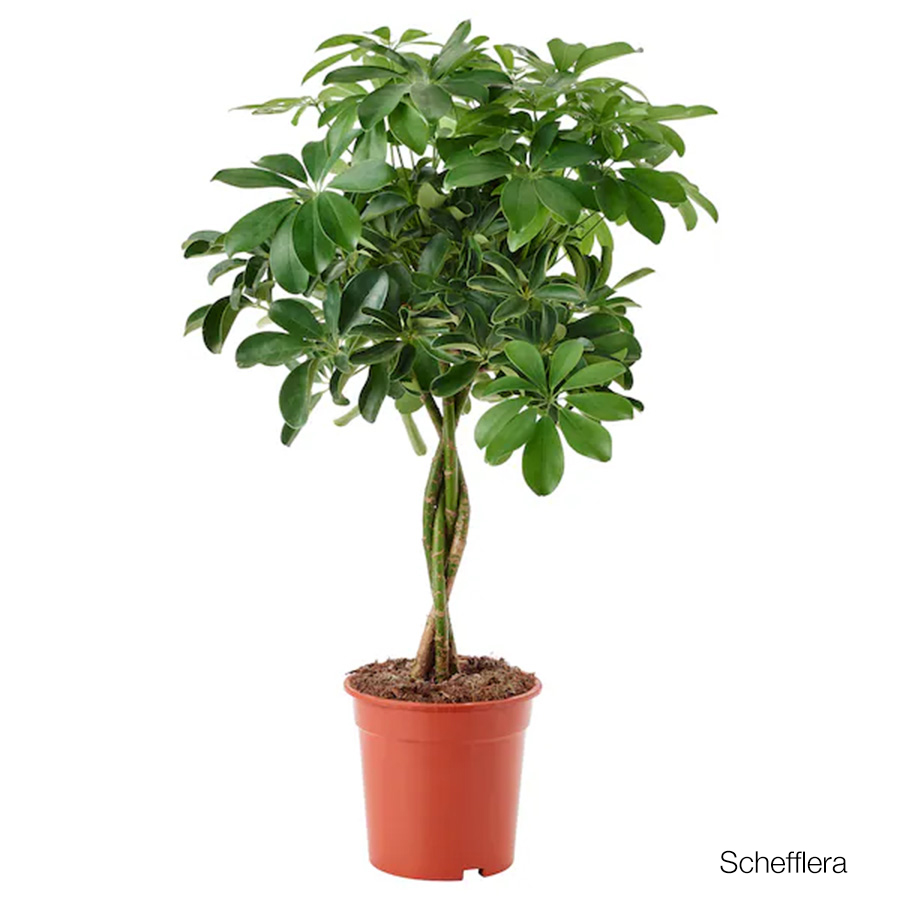
Green Design | The living room
The living room is the room in the house intended for conviviality and relaxation. Plants can have a relaxing effect here, as long as they do not obstruct the passage and interfere with normal activities.
You can opt for some succulents plants placed on a low table or arrange tall plants on the sides of the sofa, TV stand or bookcase to create some plays of volumes. For larger living rooms, maxi-sized plants are also valid, while for smaller ones, climbing plants to hang from the ceiling or small vases placed on shelves and bookcases are valid.
Let’s keep in mind that the living room is by definition an environment always quite warm and dry, therefore not very functional for species that require humid environments and large quantities of water.
The Ficus Lyrata is generally a houseplant, capable of becoming a truly exclusive and design object. Perfect in bright environments (but not too much), it loves to be near windows. To prevent the Ficus from suffering from too much light, it would be a good idea to turn the plant from time to time. It is also important that the soil is always moist. In case of poor light, choose Ficus Alii or Kenzia.
For lovers of large sizes, choose Schefflera, Fatsia Japonica, Kenzia and Yucca.
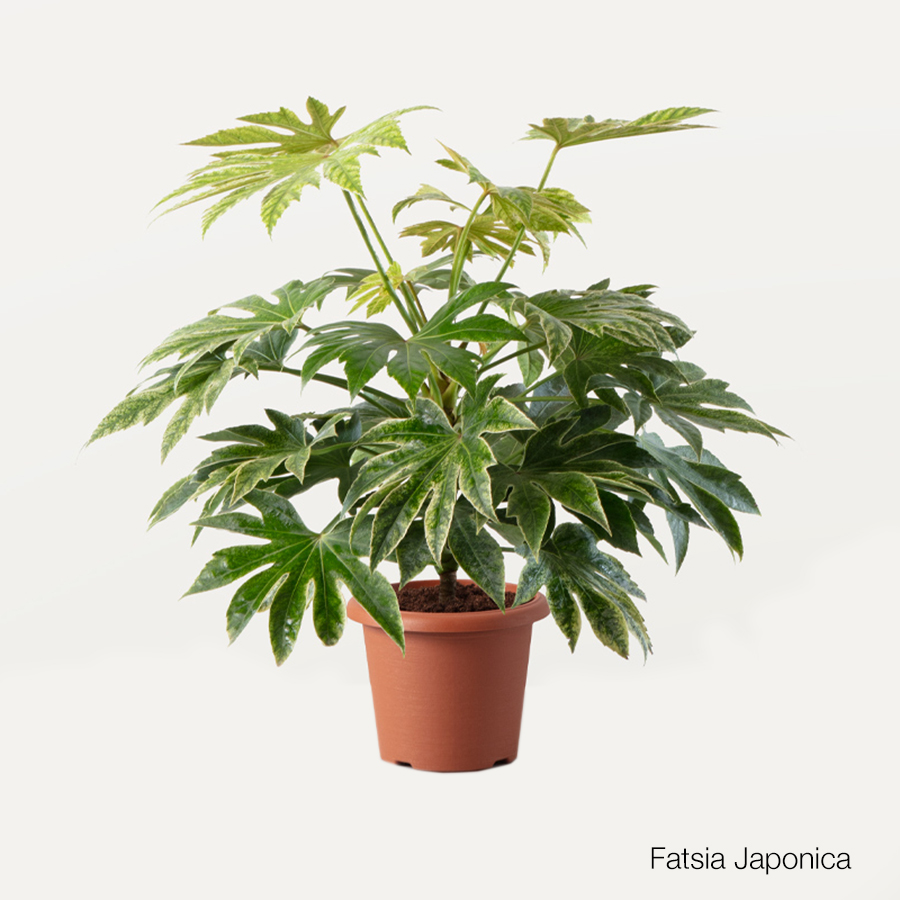
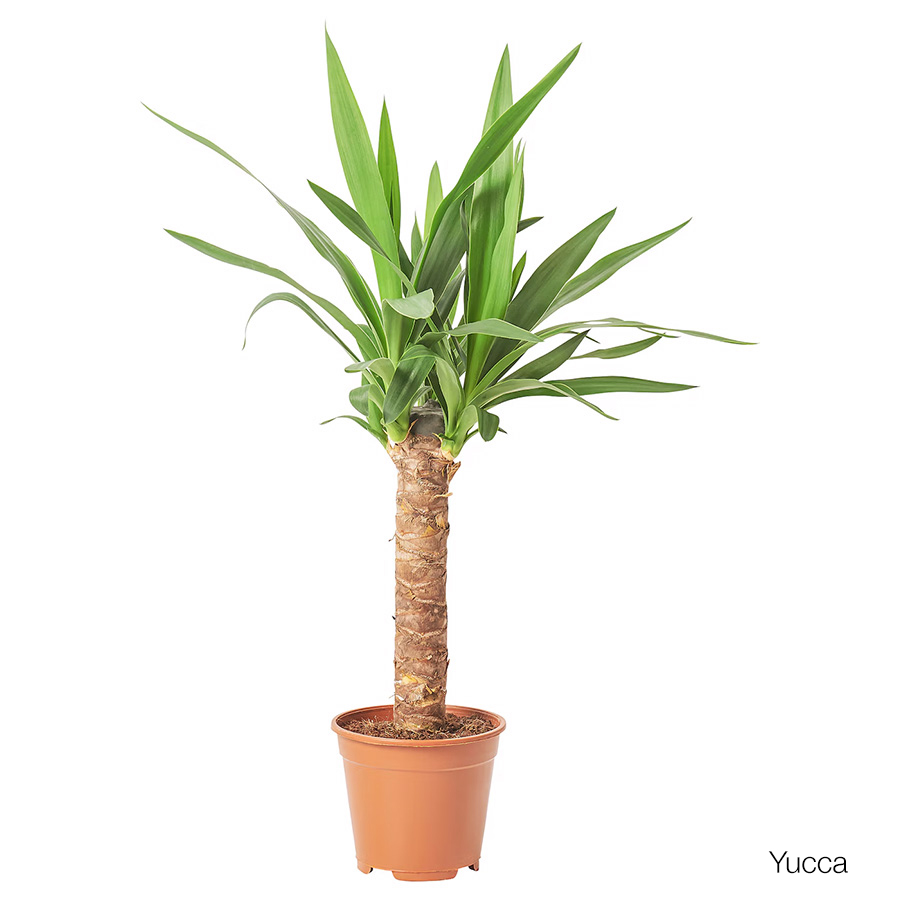
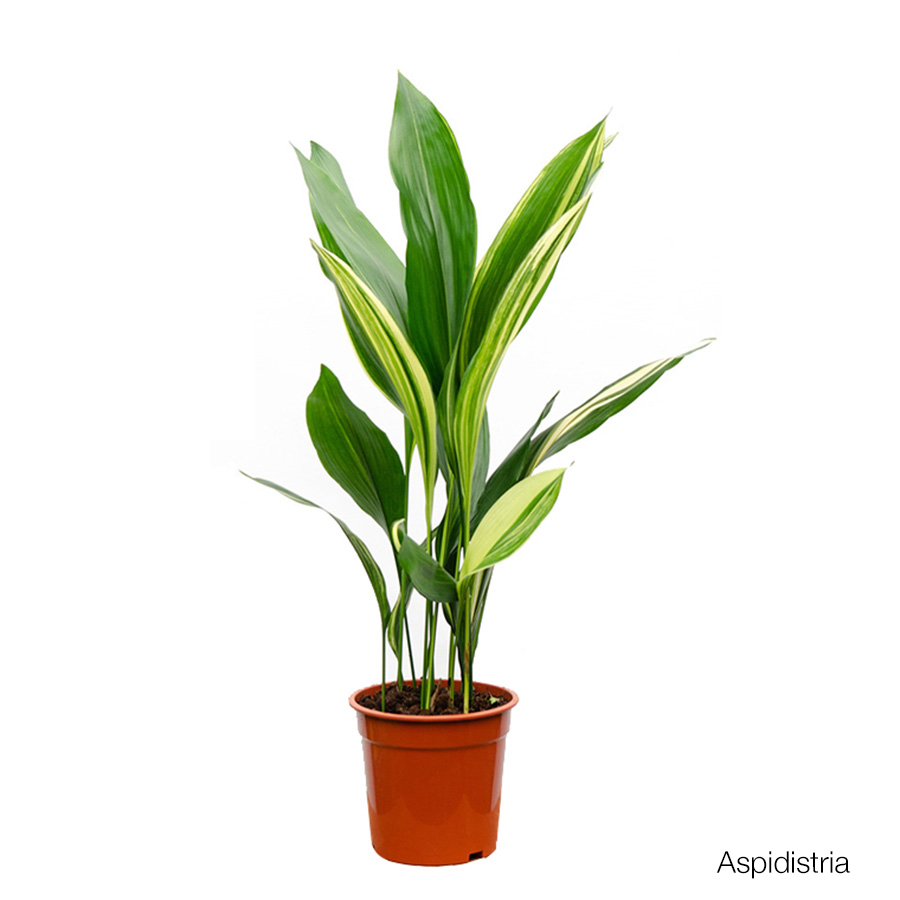
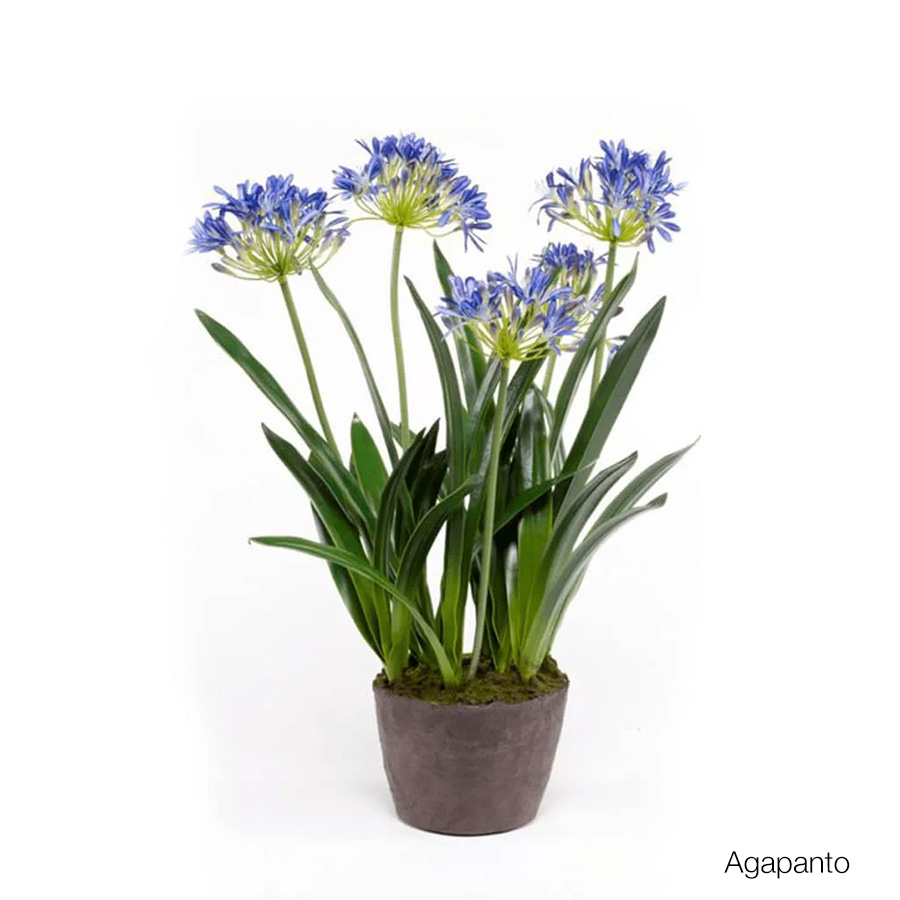
Green Design | The kitchen
In contrast to the living room, the kitchen is generally a busy, humid and hot environment due to the food preparation activities carried out inside it. The advice for those who want to furnish the kitchen is to place the plants high up, on shelves and furniture far from the stove or buy climbing plants to hang from suspended vases, ceilings and walls. In this way, the passage is left free and is possible to take advantage of the climatic conditions that favor tropical plants that appreciate heat and humidity.
If, however, you want to place a green spot on the table or on the kitchen counter, you can place some aromatic plants such as basil, oregano or even small potted trees such as olive trees or Schefflera that require little maintenance.
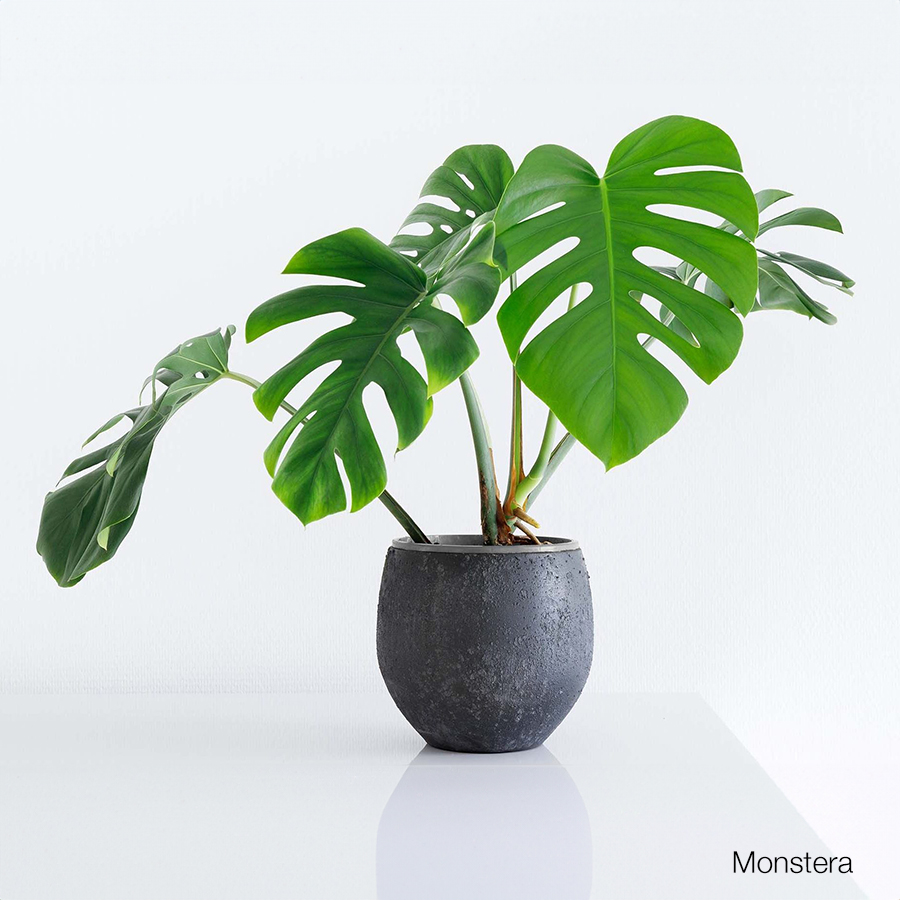
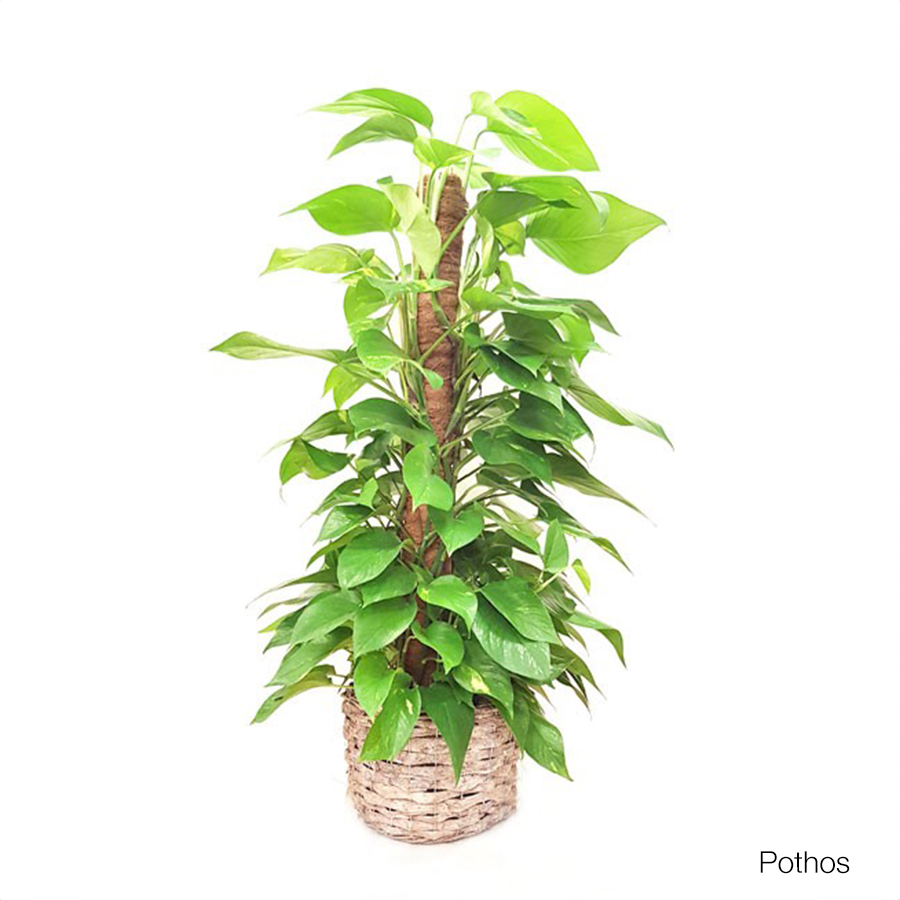
Green Design | Bedroom and children’s bedrooms
Normally, we tend to limit the presence of plants in the sleeping area because during the night hours, instead of releasing oxygen thanks to the photosynthesis process, they tend to absorb it, making the environment less than optimal.
However, with the necessary precautions, it is still possible to furnish bedrooms and children’s bedrooms, keeping the different plants away from the bed or bringing them closer to safe spaces. In a small bedroom, we can place succulent plants such as Aloe vera or those capable of surviving in low light conditions, such as Pothos. For the more ambitious, it is also possible to opt for oversized plants such as the Kenzia, the Banana, the Peruvian Palm or the Monstera, as long as you do not exaggerate with the number, making the environment unhealthy. In the case of more pronounced brightness, you can opt for Sanseveria, Chamaedorea Elegans, Crassula and Oxalia Triangularis.
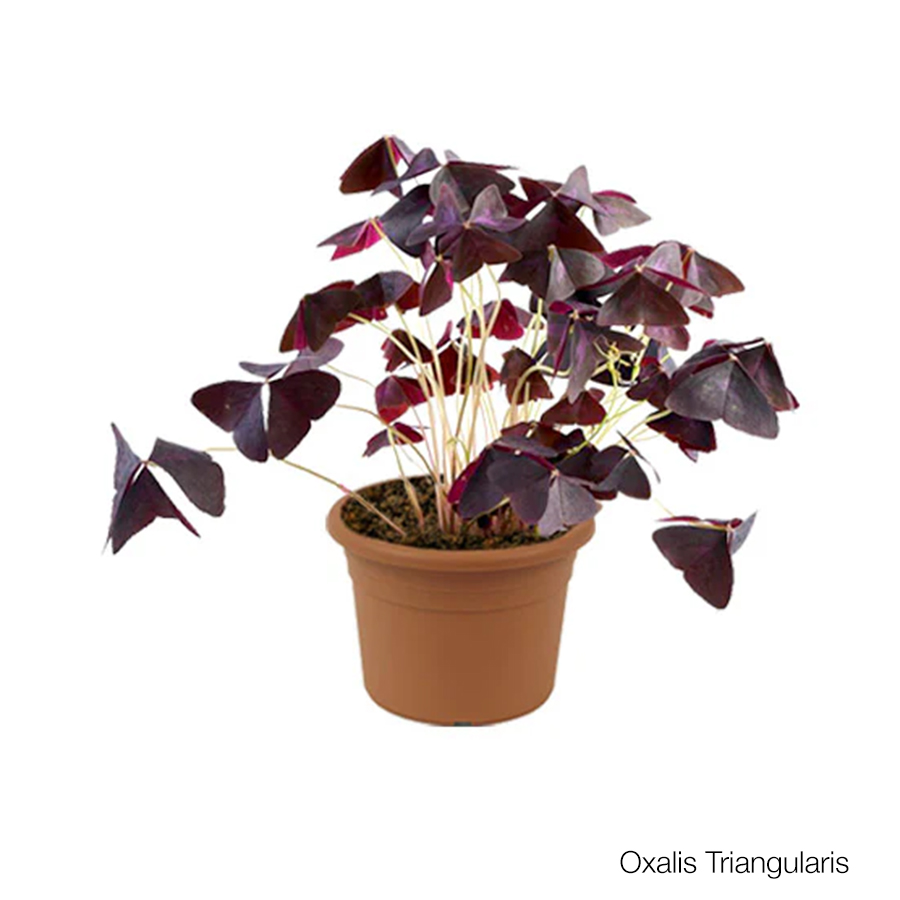
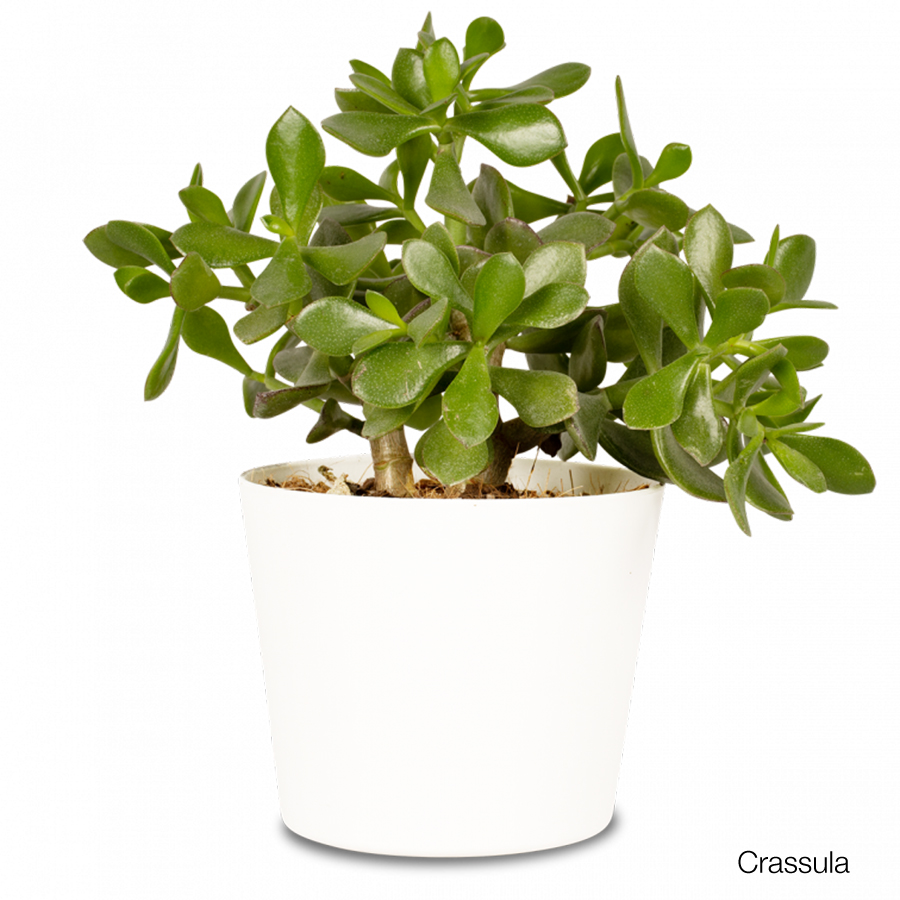
Green Design | The bathroom
The bathroom is by definition a humid environment, generally not very sunny and hot during the day, with the possibility of large temperature variations when it is not used. Based on these characteristics, it is better to choose tropical plants that love the shade or that are able to absorb humidity such as Ferns, Begonias or Orchids.
For particularly humid bathrooms, you can choose Bamboo, Aglaonema, Aspidistra or Aloe vera as they do not require direct light and resist well even in the shade.
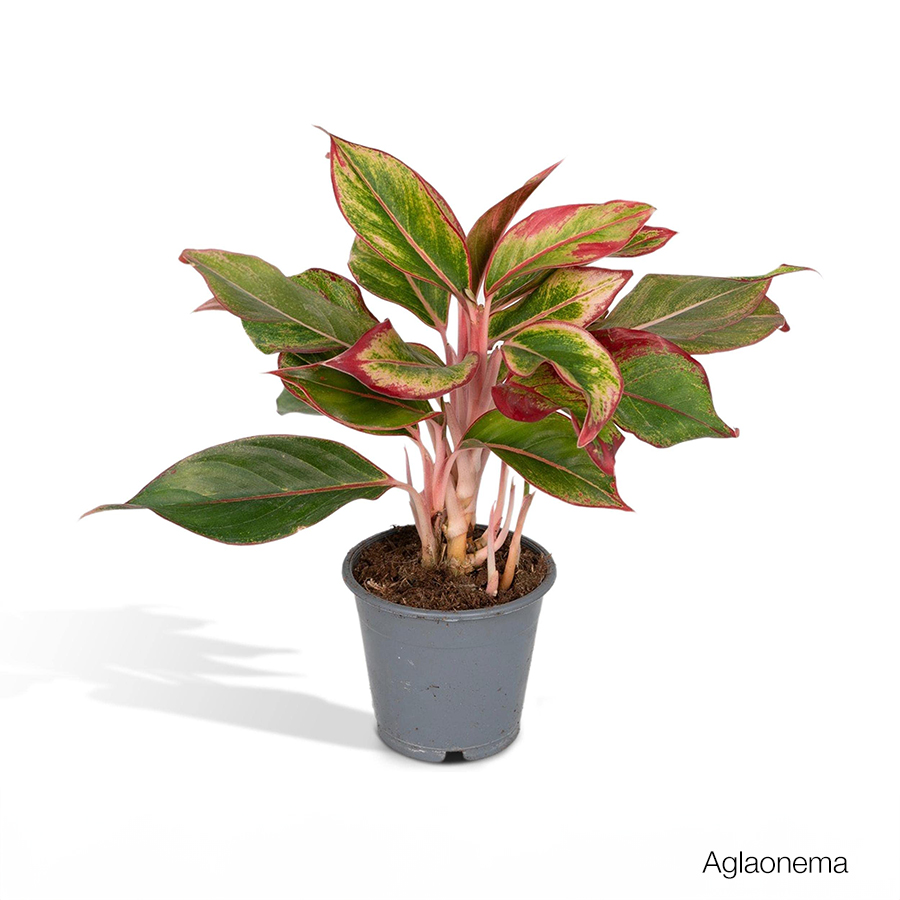
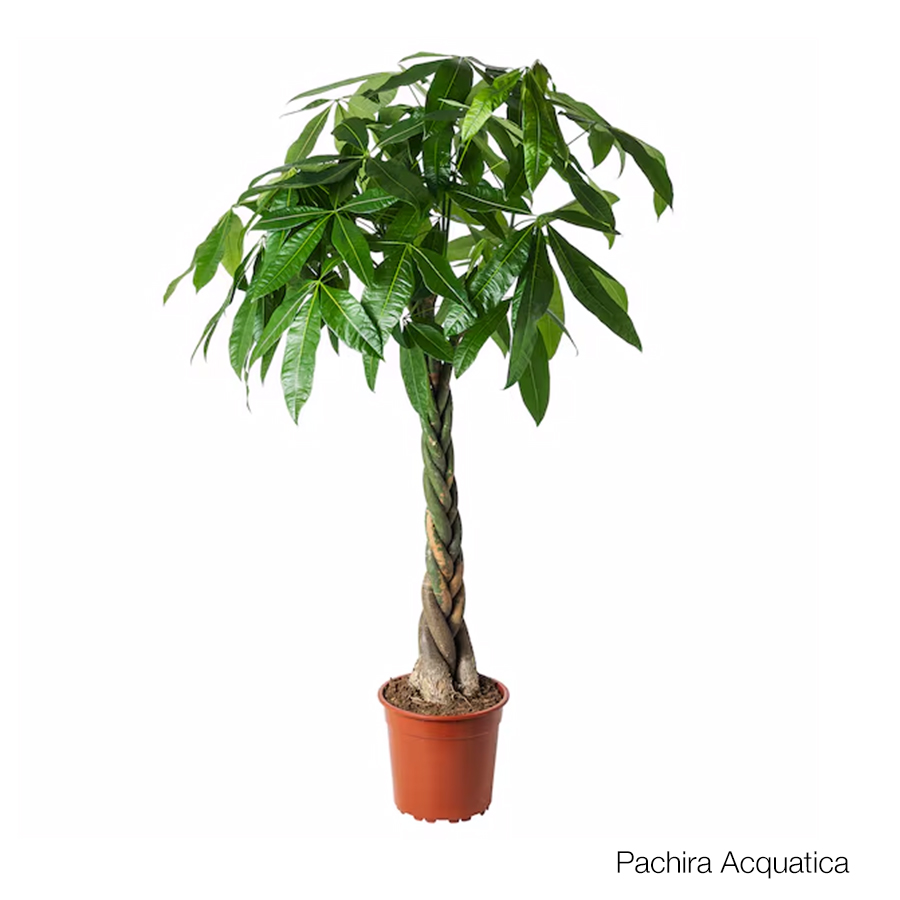
Decorating with plants | Some styling tips
Keep in mind the heights of your home. If you have high, soaring ceilings, you can opt for plants that grow vertically. Conversely, if you are in apartments with low ceilings, avoid surrounding yourself with that type of plant to avoid creating a dome effect.
Observe your home so as to identify niches and recesses, areas more or less exposed to sunlight or where there are drafts. Based on this, you can easily identify the most suitable species, avoiding unpleasant surprises.
Take into account the environment: wall colors, furniture style and decorative elements must interact with the plants to create a pleasant and coordinated effect. If, on the other hand, you are dealing with a very neutral environment, you could use green furniture precisely to give an additional touch or the distinctive note that was missing to bring out your personality.
To each personality its own green furniture | The latest trends
After these first preliminary ideas, here are some of the trends that in recent years have contributed to making green design increasingly popular and sought after in homes around the world.
Vases. The choice of vases is fundamental. A good vase enhances what is inside it but at the same time strengthens its chances of surviving or not in the surrounding environment. The choice of a minimal vase or a more flamboyant one completely changes the result that you will have in the room, modifying the personality of the furniture as a whole.
Vegetal Walls. For some years, vegetal walls have been depopulating, real portions of wall equipped with shelves, wall units and hooks designed to create a sort of vertical and miniature garden, lush and usually high up to the ceiling. The result is obviously extremely suggestive, usable both to divide spaces and also to give personality to the wall of a room.
Mix of art, design and plants. Combining different trends and inspirations is not only beautiful, but also fascinating as it pushes us to search for the dominant and binding character in each one. A diversified environment is an environment rich in dialogue, which envelops us and integrates us with its dimensions.
Climbing plants. Ideal for small spaces or for anyone looking for furniture that takes its place in the environment, creating its own path independently.
Most common plants
Small/medium size
- Calathea Orbifolia_ Houseplant that originates from Bolivia. It develops very decorative leaves marked by elongated, silver-green spots that cover the upper surface. In summer it can produce small tubular flowers. It loves humidity, does not tolerate direct light, loves heat.
- Orchid_ Present in numerous variations of colors and sizes, orchids are distinguished by their robustness and adaptability, offering particularly long flowering periods. Do not expose to direct light but choose well-lit places, it loves humidity and a temperate climate that does not fall below 15 °.
- Begonia maculata_ Plant of modest size, characterized by large, spotted leaves. It requires bright places without direct exposure, mild temperatures between 18 and 30 ° C. Humid environment.
- Monstera adansonii/deliciosa_ Originating in Central America, it is a perennial and evergreen climbing plant that loves light, even direct light, and airy areas. Ideal for purifying the air. Temperatures above 12°. It requires little care and is very decorative.
- Spathiphyllum_ Tropical plant characterized by an elegant white flower. Place away from direct light, water often but without stagnation. Temperatures above 20°.
- Anthurium Dorayaki_ Indoor plant easy to grow and small in size, with leaves characterized by ornamental veins. Bright environments without direct light. Moderate watering, humid environment. Temperatures above 10°.
- Sanseveria Trifasciata_ Green plant with irregular and transversal streaks and lanceolate leaves. It loves light without direct exposure. Requires little irrigation. Does not require special care.
- Crassula Ovata_ Known as the “money tree”, it can accumulate humidity, so it does not require frequent watering. It loves direct light and warm temperatures, although it can withstand temperatures up to 7°.
- Pothos_ Decorative climbing plant, known for resisting both lack of light and water. Very fast growth. Climate from 13°. You can choose from more than 50 different species.
- Oxalis triangularis_ Perennial plant up to 20 cm tall with prolonged and repeat flowering. Very particular leaves, velvety and purple in color. The leaves and flowers close at night, taking the shape of a closed, wrapped umbrella. It prefers shade, frequent watering, temperatures above 9°.
- Pilea peperomioides_ Also known as the “coin plant”, it is perfect in bright apartments, and temperatures between 15 and 25° c. Watering is planned when the soil is dry, and during spring and summer it is important that it is abundant.
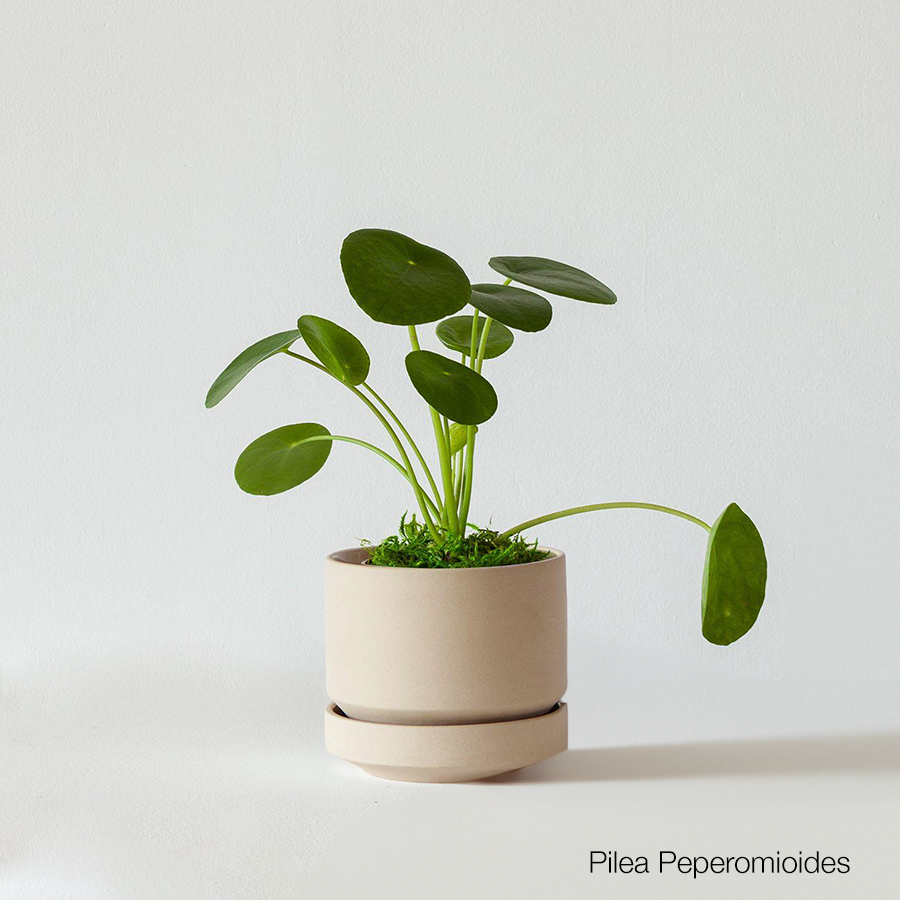
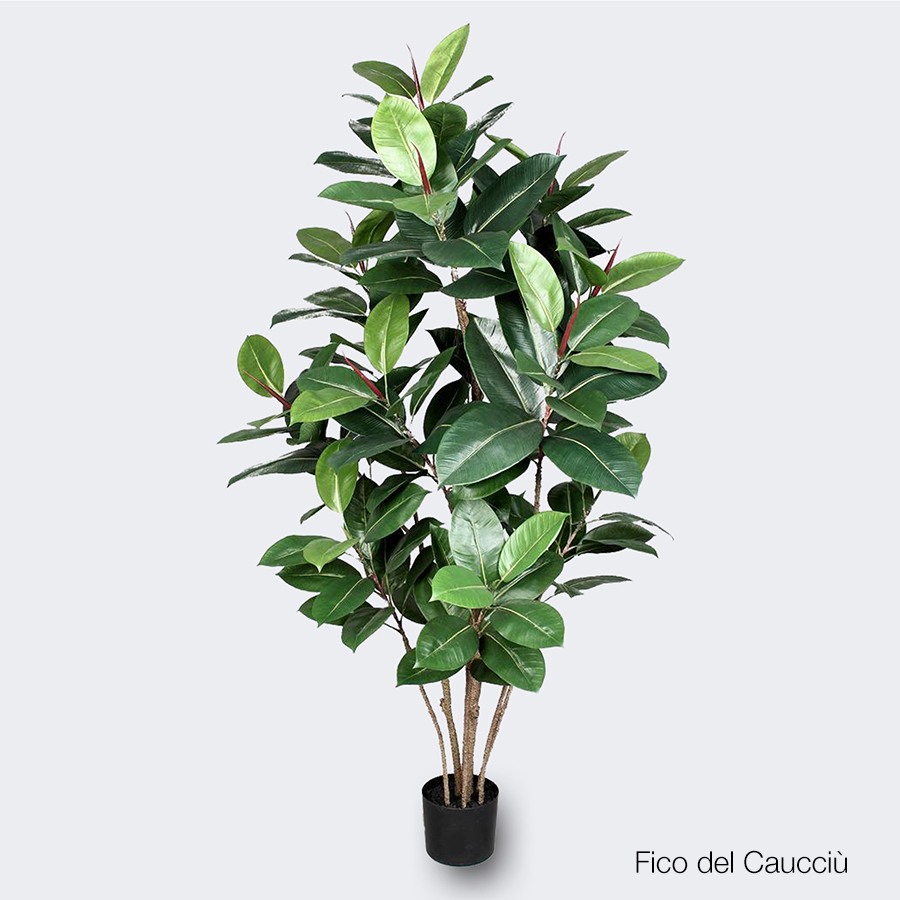
Medium / large size
- Sterlizia Nicolai_Iconic tropical indoor plant similar to a palm. Commonly known as the “bird of paradise”. It grows quickly and can reach considerable dimensions. It loves bright places even with direct sunlight. It requires moist soil but does not like stagnation. Temperatures between 15° and 25°.
- Rubber fig_ Plant characterized by splendid oval, smooth and shiny leaves. It is an evergreen specimen that can take on reddish, variegated or tricolor colors. It can reach 3.5m in height and produce small figs about 1 cm large. It loves bright and humid places. Water often and spray with water.
- Palms_ We distinguish different species including Areca, Fortune Palm, Cycas, Kenzia and Phoenix Palm. Each is characterized by different leaves and stem, with an average growth of up to 2 meters. They purify the air and do not require frequent watering. They love light but not direct.
- Alocasia Zebrina_ Also known as “elephant ears”, it is an evergreen plant with large leaves that need humidification. It requires a lot of light but not direct sun with moist soil in summer. Temperatures above 10°.
- Ficus Lyrata_ Indoor plant characterized by large leaves with marked veins that grow in a vertical position. It requires frequent watering and a generally humid climate. It loves bright places, near windows.
- Ficus Benjamina_ Tropical plant that can reach 3 meters, long-lived, characterized by small leaves of an intense green. Purifying function. It requires little attention, a generally humid climate with temperatures above 10°. Sunny environment without direct exposure.
- Pachira Aquatica_ Tropical plant with an intense green color and slow growth. It has large leaves with three/five lobes. Temperatures above 10° with diffused but not direct light. Humid climate and frequent watering.
- Aspidistra Elatior_ Rustic and long-lived plant that adapts to different terrains and contexts although it prefers the shade. It reaches 60 cm in height and tolerates high temperature variations. Infrequent watering.